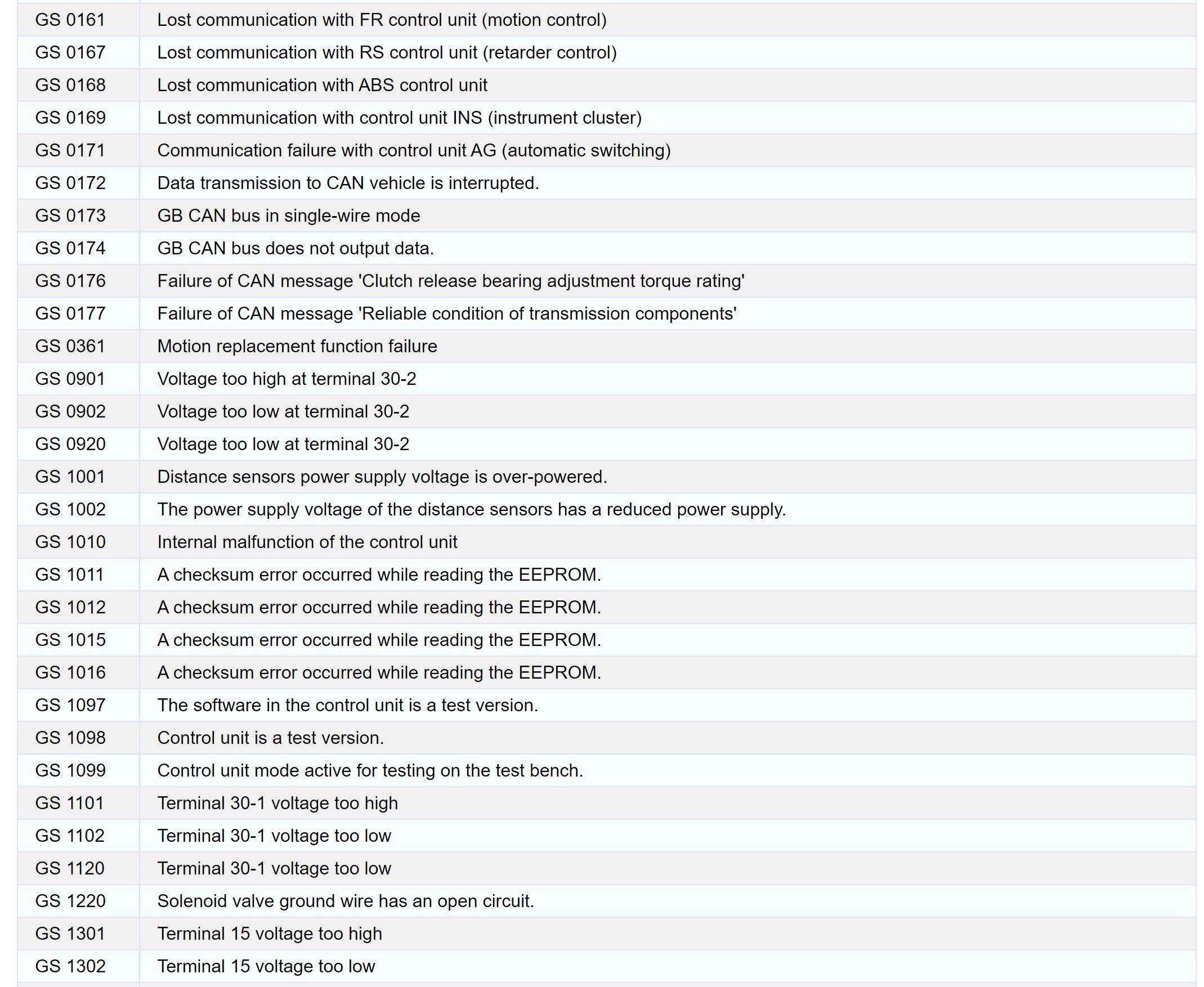The Mercedes Atego AGS unit is a vital component of your vehicle’s transmission system. It is responsible for controlling the gear shifts and ensuring smooth operation of your truck. However, like any other electronic system, it can develop faults that hamper its performance. These faults often manifest as error codes on the dashboard, which can be daunting to troubleshoot, especially if you don’t know where to start.
If you’re experiencing problems with your Mercedes Atego AGS unit, the first step is to identify the fault codes displayed on the dashboard. Once you’ve identified the codes, it becomes easier to diagnose and fix the underlying issue. In this guide, we’ll explore some common fault codes, their symptoms, causes, and solutions.
One of the most common fault codes in the Mercedes Atego AGS unit is P0750. This code indicates a problem with the shift solenoid valve A circuit. Symptoms of this fault include difficulty shifting gears or the transmission getting stuck in one gear. The main cause of this issue is a faulty shift solenoid valve, which needs to be replaced.
Another common fault code is P0730, which points to incorrect gear ratio. This code usually occurs when the transmission tries to shift into a gear that doesn’t match the engine speed. Possible causes of this issue include a faulty torque converter clutch, worn-out bands or clutches, low transmission fluid, or an electrical fault.
If you notice a P0700 fault code, it means there is a general transmission control system malfunction. This code often appears alongside other specific fault codes, and it indicates a problem with the AGS unit’s control module. In this case, you’ll need to take your Mercedes Atego to an experienced technician for diagnostics and repairs.
In conclusion, troubleshooting fault codes in the Mercedes Atego AGS unit requires some technical knowledge and expertise. However, by understanding common issues, symptoms, causes, and solutions, you can identify and fix problems quickly and efficiently. If you’re not confident in your ability to troubleshoot and repair your vehicle, it’s always best to seek professional help from a qualified technician.
| GS 0160 | CAN bus disabled (OFF) |
| GS 0161 | Lost communication with FR control unit (motion control) |
| GS 0167 | Lost communication with RS control unit (retarder control) |
| GS 0168 | Lost communication with ABS control unit |
| GS 0169 | Lost communication with control unit INS (instrument cluster) |
| GS 0171 | Communication failure with control unit AG (automatic switching) |
| GS 0172 | Data transmission to CAN vehicle is interrupted. |
| GS 0173 | GB CAN bus in single-wire mode |
| GS 0174 | GB CAN bus does not output data. |
| GS 0176 | Failure of CAN message ‘Clutch release bearing adjustment torque rating’ |
| GS 0177 | Failure of CAN message ‘Reliable condition of transmission components’ |
| GS 0361 | Motion replacement function failure |
| GS 0901 | Voltage too high at terminal 30-2 |
| GS 0902 | Voltage too low at terminal 30-2 |
| GS 0920 | Voltage too low at terminal 30-2 |
| GS 1001 | Distance sensors power supply voltage is over-powered. |
| GS 1002 | The power supply voltage of the distance sensors has a reduced power supply. |
| GS 1010 | Internal malfunction of the control unit |
| GS 1011 | A checksum error occurred while reading the EEPROM. |
| GS 1012 | A checksum error occurred while reading the EEPROM. |
| GS 1015 | A checksum error occurred while reading the EEPROM. |
| GS 1016 | A checksum error occurred while reading the EEPROM. |
| GS 1097 | The software in the control unit is a test version. |
| GS 1098 | Control unit is a test version. |
| GS 1099 | Control unit mode active for testing on the test bench. |
| GS 1101 | Terminal 30-1 voltage too high |
| GS 1102 | Terminal 30-1 voltage too low |
| GS 1120 | Terminal 30-1 voltage too low |
| GS 1220 | Solenoid valve ground wire has an open circuit. |
| GS 1301 | Terminal 15 voltage too high |
| GS 1302 | Terminal 15 voltage too low |
| GS 1420 | Speed sensor supply voltage has an open circuit. |
| GS 1421 | The power supply voltage of the speed sensor has a short to ground. |
| GS 1422 | The power supply voltage of the speed sensor has a short to positive. |
| GS 1520 | The pressure sensor has an open circuit. |
| GS 1521 | The pressure sensor assembly has a short to ground. |
| GS 1522 | The pressure sensor assembly has a short to positive. |
| GS 1720 | The hydraulic pump output stage temperature sensor has a short to positive or an open circuit. |
| GS 1721 | The hydraulic pump output stage temperature sensor has a short to ground. |
| GS 1723 | Hydraulic pump output stage overheated. |
| GS 1820 | Valve 1 relay voltage cannot be activated. |
| GS 1821 | Valve 1 relay voltage cannot be deactivated. |
| GS 1920 | Valve 2 relay voltage cannot be activated. |


